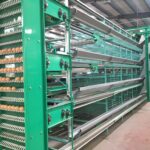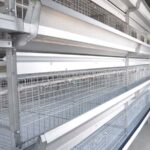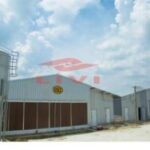Cage laying hen healthy breeding technology
Unlike the previous open-air free-range and indoor collective breeding, caged laying hens use specialized layer chicken cages for collective and large-scale breeding. This feeding method has many advantages. The authors now introduce the characteristics and techniques of layer chicken cages as follows:
Easy to manage: Now the laying hen farm is very large, and the number of laying hens is very large. It is easy to manage in a caged way. It is easy to clean and maintain in the chicken cage, and the daily management work is easy to operate. When the laying hen is sick, it can be treated in time. Therefore, the cage can also ensure that the laying hen is in good physical condition.
Convenient feeding: caged laying hens reduce the workload of raising the laying hens, facilitating collective and efficient feeding. In addition, the scientific feeding mechanism is easy to perform.
Convenience of collecting eggs: One of the biggest advantages of caged laying hens is that the design of the cages is professional and targeted. When the laying hens lay down the eggs, the eggs will roll out of the chicken cage along the bottom of the slightly tilted chicken cage and enter the chicken containment area of the chicken cage for storage. They can be collected in time and kept safely to avoid being broken by the laying hens.

Daily feeding techniques: Feeding the laying hens in a caged manner has greatly reduced the daily feeding workload of laying hens. Modern layer chicken cages have special troughs and sinks, and farmers must ensure that there is always one-third of the stock. When the laying hen is formally eaten, it is guaranteed that the feed and drinking water account for 2/3 of the trough and sink. In the summer, poultry is extremely heat-tolerant, ensuring a constant supply of drinking water in the sink. In winter, the water supply can be appropriately reduced, but the number of feeds needs to be increased accordingly. In daily feeding, pay attention to the mix of feed nutrition, and mix a small amount of sand and gravel in the regular feed to promote laying of the laying hen. In addition, to enrich the feed of the laying hens, try not to feed the feed as much as possible, and the chopped vegetables can be mixed with the feed for feeding.
Management techniques: The management of caged laying hens is also relatively simple, but several techniques need to be emphasized to improve the management of caged laying hens. The first is health management technology. Poultry excretion is very frequent, so the health work is very difficult. The breeder can lay a pushable plastic plate under each layer of the chicken battery cages. The chicken cage is followed by a chicken manure carrying box. The vertical long plastic plate is pushed 4-5 times a day, and the plastic plate under each layer of the chicken cage is placed. The chicken manure is cleared to the chicken manure carrying box behind the chicken cage. Wash the manure plastic plate every half month. Followed by the management of laying hens. The farmer is required to take out the eggs in the egg storage area of the chicken cage in time and store them in a unified manner; the last is the management of the chicken cages. Generally, the cages of the cages will have some problems after using for a long time, such as steel wire. The weld is damaged, and the farmer should repair it in time. Otherwise, the sharp steel wire may stab the laying hen and cause damage.











